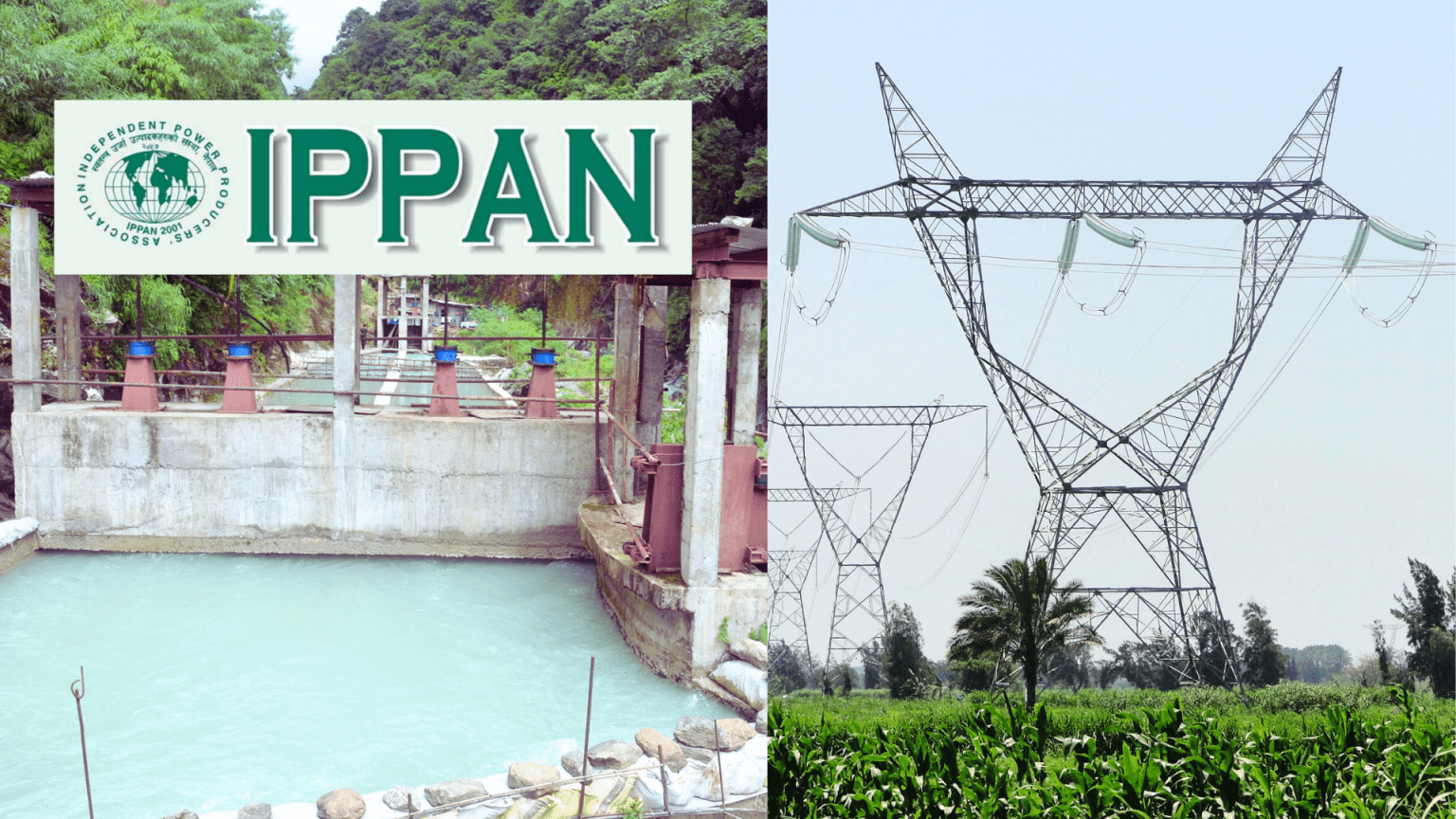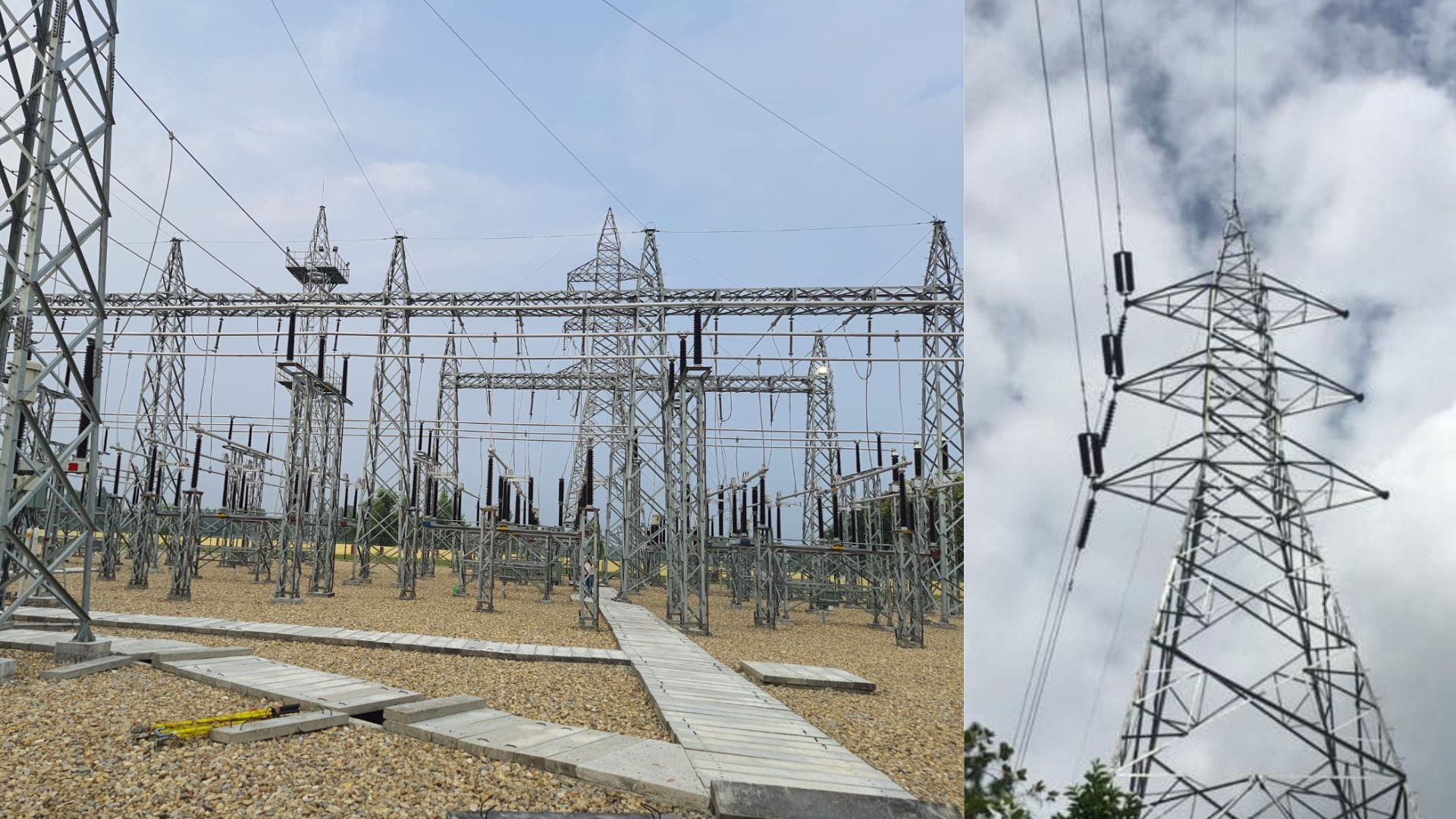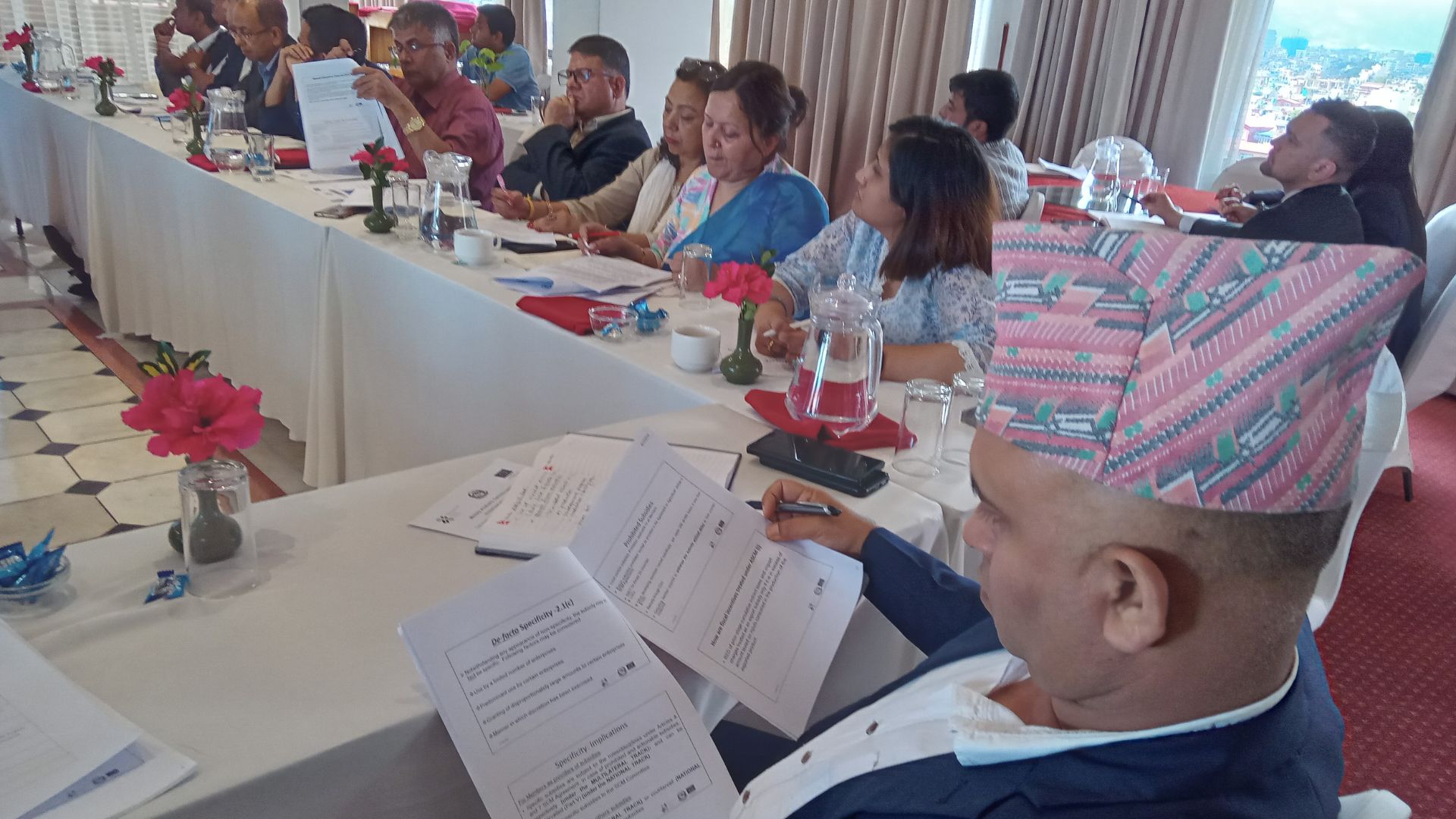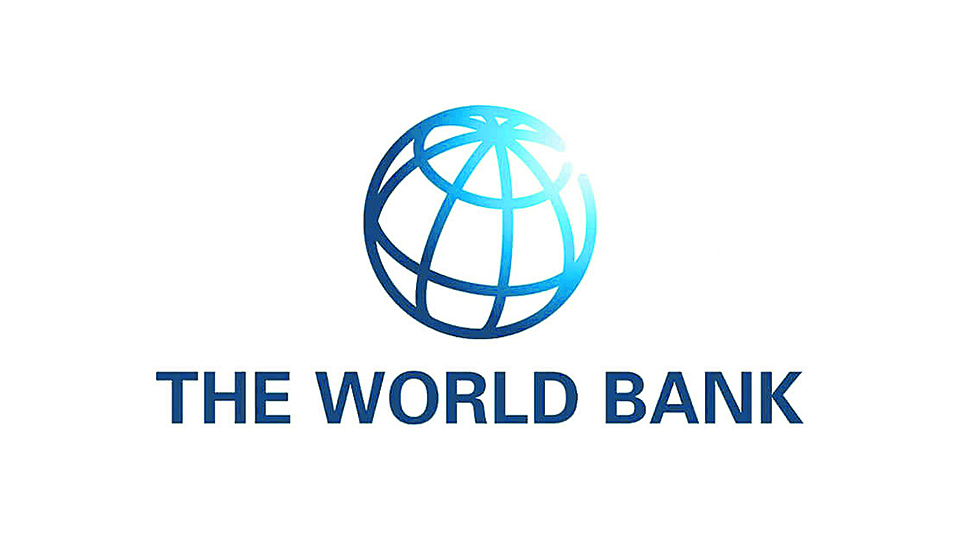
KATHMANDU: Nepali society, which has experienced 1 decade long (2063-73) painful experience of load shedding not only in winter, but also in rainy season, has now come to a state of frustration even when electricity supply is stopped for some time due to technical glitches. It has been 6 and 4 years respectively since the announcement of the end of load shedding in Kathmandu valley from November 2073 and from Baisakh 2075 across the country. Meanwhile, the electricity market, which is not limited to hydropower production, but is limited to electricity exchange (Paincho) with India based on needs, has now reached a state of open buying and selling in the Indian market.
Nepal, which first exported 39 megawatts of electricity generated from the Trishuli and Devighat hydropower projects built with Indian subsidies, has so far been given permission to sell 409 megawatts of electricity from 8 hydropower projects to (Indian IX) for day-ahead bazaar sale. The Secretary-level meeting held in India’s Mount Abu last time opened the way for the import and export of electricity between Nepal and India up to 1,200 megawatts. It seems that the possibility of electricity trade between Nepal and India will increase in the coming days, whether it is due to necessity or based on necessity. On the other hand, the power generation capacity and quantity of electricity produced in Nepal is also increasing. But, ironically, domestic consumption has not been able to increase compared to production. Due to this, the private energy producers are worried that the produced electricity will not be consumed in the long term. They insist on increasing domestic consumption and opening the way to export abroad. In addition to this, they have been advocating for a few years that the doors should be opened to private companies (except the Electricity Authority) to trade electricity within the country and abroad as in electricity production. Since last year, the excess electricity is being wasted even after reaching the consumption during the monsoon. Dozens of hydropower projects electricity have started wasting due to not being able to connect to the transmission line. If there is no change in the current situation of wasting electricity, there is a danger that this fate will continue.
Power management during monsoon is a major challenge
Nepal Electricity Authority is serious about managing the international market of monsoon electricity which is not being consumed in the country. Kulman Ghising, executive director of the authority, says that electricity management in monsoon is the main challenge at present.
He said that during the rainy season of 2080, preliminary preparations are being made to export electricity that is consumed internally. According to the data released by the authority, it seems that the next year will produce more than 1,000 to 1,200 megawatts of electricity. The authority is preparing for the market management of this electricity. According to the forecast made by the Independent Energy Producers Association of Nepal (IPPAN), last year, more than 2 billion rupees of electricity had to be wasted due to lack of proper management of the electricity market during the rainy season. Private producers are worried that this amount will increase further in the coming monsoon. As 800 megawatts are going to be added to the electricity transmission system in the current financial year, it seems that there may be a situation where a large part of the income from the sale of electricity will be lost in the coming monsoon. Due to the lack of physical structure of the transmission system and the lack of proper management of the market, billions of electricity have been wasted during the monsoon. Dinesh Kumar Ghimire, secretary of the Ministry of Energy, Water Resources and Irrigation, says that the focus of the government is to ensure that the electricity produced by the hydropower project is not wasted during the monsoon. He said that Nepal would get a lot of relief if they were allowed to use the transmission line easily to export 400 megawatts of electricity to Nepal through the transmission line connected to the Indian state of Bihar. The Indian side is looking very positively at our proposal to allow the export of electricity through transmission lines connected to Bihar. We are hopeful that the access to the 132 kV transmission line, which is currently in operation, will be opened,” he said. He said that the matter of transmission line of Tanakpur will also be studied technically and will be taken forward. He said that the government is committed to resolve this matter soon and also in the matter of Dhalkebar-Muzjafpur, an environment has been created to upgrade the substation.
On the Indian side, it is expected that the work of upgrading the capacity of the substation will be done within the specified time. Secretary Ghimire said, “If all these works are done soon, the electricity produced in Nepal will not be wasted during the monsoon season.”
Is opening the electricity business to the private sector a solution?
For a few years now, independent energy producers have been raising the voice that private companies should be opened not only in electricity production, but also in trade. They are institutionally waiting for the government’s permission to set up a number of electricity trading companies. However, since the Electricity Act 2049 has provisions to allow the private sector to trade in electricity and the new Electricity Act has not yet been enacted, the demand of energy producers has not been met yet. The energy producers have publicly stated that electricity consumption has not been managed due to the fact that the private sector has not been allowed to trade electricity. Hydropower entrepreneurs say that if the government immediately opens the door to electricity trade, the private sector is ready to manage the domestic and international market of monsoon electricity.
Ashish Garg, Vice President of Independent Power Producers Association of Nepal (IPAN), says that if the private sector is allowed to trade in electricity, they can find a buyer and enter into a Power Purchase Agreement (PPA) and sell the electricity to the markets of India and Bangladesh. According to him, in the present situation, the private sector can find the electricity market for hydropower projects up to 5000 megawatts in India and Bangladesh. “When the private sector is allowed to trade in electricity, it has to work in one- one step “Within 10 years of permission, the private sector can achieve success in international electricity trade,” he says. Not only that, the private sector claims that India and Bangladesh will give a better PPA rate than the Electricity Authority after getting permission to trade in electricity. He pointed out that there is a possibility that electricity worth 25 billion rupees will be wasted in the coming monsoon and more than this year.
He said that if electricity is sold directly with Indian buyers through the private sector, the cost of mediation will also be minimal. It also accelerates the construction of more investment and hydropower projects. At the current rate, there is no possibility of any more projects coming. IN order to reduce the excessive cost of mediation, there should be a direct relationship between the buyer and the seller. In the same way, a mechanism should be formed’, he says.
‘The government is preparing to allow the private sector to trade in electricity.”
Energy Secretary Ghimire says that the government is in favor of allowing the private sector to trade in electricity. “Now the Electricity Act has become essential for electricity trade and other activities. Therefore, it has given us confidence that it will be passed soon,” he says. He says that if the Federal Electricity Act is not made, the state and local levels can also make laws. He says that due to the urgency, he hopes that the Parliament will pass the Electricity Act soon. He says that if the Union cannot make laws, other governments will not be able to make them either.If there is no market for the produced electricity, the hydropower developer is not only worried about not getting investment, but also getting trapped in debt.
Therefore, because of not being able to sell electricity worth billions of rupees in monsoon, the promoter companies of dozens of hydropower projects have expressed their grief that they are unable to pay the interest on the loan. They point out the need for the Prime Minister, Minister of Energy and other high political levels to try to solve this problem.
Energy expert Dr. Mukeshraj Kafle says that there is no need for the state to be negative towards electricity trade after the private sector has shown interest. His opinion is that the involvement of the private sector should be taken as a matter of course, as there is a legal hurdle now, as the production increases and the excess electricity consumed within the country has to be sold. The necessary political and physical infrastructure should be fixed and it is best to re-evaluate and improve based on the positive and negative aspects that come after permission is given, he says.
Lack of infrastructure, standards and policy decisions are barriers to electricity trade
Before the private sector is allowed to trade in electricity, it is necessary to prepare a minimum policy and physical infrastructure. However, such infrastructure has not been prepared so far. Sufficient transmission lines are necessary internally within the country and externally for the electricity trade. However, in reality, the transmission lines are not enough. Not only this, even if the built infrastructure is to be used, there seems to be a lack of procedures and guidelines, transmission charges (wheeling charges), grid codes for the participation of the private sector in the construction of domestic and international transmission lines. Since the power transmission line construction work is a low return plan, it has not been able to attract the private sector that wants more return. There is a need to ensure the participation of the private sector in the construction of the transmission line and to provide an opportunity for the households affected by the transmission line to invest in the power project and to solve the local obstacles to complete the project on time and to prepare and implement it effectively. On the other hand, the Electricity Authority has set a program for the next 5 years including projects for power generation, transmission and distribution under construction to increase consumption within the country and export the increased electricity. However, it seems that an investment of more than 8.5 trillion rupees will be required to implement that action plan. For this, there is a huge investment gap from the government.
If that gap can be made to involve not only the government, authorities and donor agencies, but also the private sector, a win-win situation will be created. Therefore, there are obstacles such as lack of necessary policy decisions, setting standards, building infrastructure and lack of investment for electricity trading. Beside, when trading power with India, the trade should be based on the ‘Cross Border Electricity Trade Guidelines’ with India. On the other hand, the government side claims that many foundations of electricity trade have been prepared. The Ministry of Energy has informed that we have prepared the necessary draft of internal power trade guidelines. If the ordinance is approved, we have done our homework on how to involve the private sector in the power trade. We have also prepared a draft of power trade guidelines and power trade guidelines to give permission for power trade,” says Secretary Ghimire.
Now after the Electricity Act comes, the guidelines are also ready to be issued. The government officials say that they are positive about involving the private sector immediately and open access to power trade. After that, the handling charge will also be decided. The Electricity Regulation Act has also assigned responsibility to the Electricity Regulation Commission. The government claims that necessary preparations are also being made. Gokarnaraj Panth, secretary of the Electricity Regulatory Commission, says that although the Regulation Act has given responsibility for regulating electricity trade, the commission’s role will not be significant unless the electricity trade is allowed for open access to electricity and private companies. He says, “The commission will play its role according to the law only after it becomes clear what will be the conditions of electricity trading to private companies.” He said that after the private company gets the license (permit), the commission will work on the necessary guidelines, standards and wheeling charges.
Private sector involvement in construction of transmission lines is limited to rumours
In the Thirteenth Plan (2070/71-2072/73), along with the strategy of expanding and strengthening electricity transmission lines, a strategy was taken to prepare and implement the necessary procedures to attract the private sector in the construction of transmission lines through the public-private partnership policy.
Item No. of the budget statement of 2075/76, In 147, there was a program to develop projects in the concept of construction and transfer to get private investors to participate in the development of transmission lines, and arrange arrangements to provide investment opportunities in power projects to households affected by transmission lines.
However, the procedure for the construction of transmission line through public-private partnership policy has not been prepared yet.
Steps taken by the private sector in power trading
The current Electricity Act 2049 does not have a clear provision for establishment of electricity trading companies and granting of permits. The electricity bill to amend it was registered and regularly discussed in the previous parliament but could not go ahead, so it has reached the draft stage again.
Although it is said that it will be taken forward after the formation of the new government, it has not yet been registered in the parliament. Meanwhile, as a subsidiary company of the Authority, Nepal Electricity Trade Company has received approval through a decision made by the Council of Ministers on 8 Poush January 2078.However, no activity has been seen in the electricity business. It was established in 2017 as a subsidiary of the government-owned Electricity Authority.

In section 35 of the Electricity Act 2049, there is a provision that any person or organization can be contracted to produce, transmit or distribute electricity based on the conditions mentioned in the same contract. However, through this arrangement, the government does not seem to have the intention of immediately giving permission to private companies to trade in electricity. Although the government did not immediately give permission for the electricity business, the private sector did not remain silent.
It is believed that one day the private sector will also get permission to trade in electricity. On the other hand, the government officials and political leaders are giving the impression that they are becoming positive about allowing the private sector to trade in electricity. As a result of this, apart from Nepal Electricity Trade Company, two other companies have been established from the private sector as subsidiary companies of the authority.About 6 years ago (year 2018), independent power producers have registered Nepal Power Exchange with the Industry Department. After registration, when they asked for permission for electricity business, the electricity department rejected (rejection letter) saying that it was not given by law. IN response to the letter requested by Ippan, the Ministry of Energy Secretary level meeting decided that there is no legal arrangement on 28 July 2076. It was mentioned that ‘the issue of supplying electricity to the markets of India and Bangladesh is welcome, but there is no provision in the existing law for granting permission/acceptance as requested’.
The private sector is also actively lobbying after the Nepal Electricity Trading Company established as a subsidiary company by the government-owned Electricity Authority received approval from the Cabinet on the proposal of the Ministry of Energy. Private energy producers say that there should be competition in electricity trade and for that the state should treat everyone equally. Ippan says that the authority alone cannot create the entire market and 3 to 4 companies (entities) are needed to do business. Vice President Garg says that if the new company is approved, the market will be competitive and grow. Not only this, the power business will establish a new milestone in the 2-day eighth edition of the Energy Conference 2023 (Power Summit) scheduled for the coming Baisakh 5th and 6th (April 18th and 19th).
IPPAN has informed that a program to sign a memorandum of understanding for the direct power purchase agreement (PPA) between the Indian buyer company and the private hydropower companies that purchase electricity from Nepal has been decided at the conference. Apart from this, other agreements and understandings for the development of renewable energy and market expansion will also be signed at the conference. The conference will be important in expanding the market for electricity produced in the country.
5 companies interested in power business
Firstly, Electricity Trading Company has been established as a subsidiary of Nepal Electricity Authority. In this company, Nepal Electricity Authority will have 51 percent, power generation 15 percent, National Transmission Grid 15 percent and Hydro Electricity Investment and Development Company 15 percent.
It was established in 2017. Through the decision of the Cabinet, this company has received permission for electricity business. It is said that the unbundling process of the authority has also been affected due to the government’s delay in giving approval to the electricity trade, but even after getting the approval, no concrete progress is seen.
Second, the independent power producer has established Nepal Power Exchange Limited (NAPEX) in 2018. This company aims at domestic and international electricity trade.
The paid-up capital of this company is 100 million with a total capital of 2 billion. 45 percent of IPPAN members and 15 percent of Indian Energy Exchange will be invested in it.
For that, a memorandum of understanding has been signed in 2019. Similarly, IPPAN has informed that the International Finance Corporation’s 10 percent and Bangladesh’s United Group’s 5 percent investment are being discussed. Apart from that, 10 percent will be invested by banks and financial institutions and 15 percent by the public. This company has also been continuing all kinds of efforts to get approved for a long time.
Thirdly, Nepal Infrastructure Bank (NIFRA) has proposed a power trading company with a cost of 1 billion rupees. In this company, it is proposed to have 15 percent of NIFRA, 36 percent of companies from India and Bangladesh, 20 to 30 percent of private sector and financial institutions, 10 percent of common people along with 10 percent of Ministry of Energy and 10 percent of Electricity Authority. NIFRA has proposed to work to include international electricity trading companies or organizations working in the field of electricity. Similarly, the companies of India and Bangladesh have also been asked to submit the shareholder’s report. However, it has not yet taken a solid shape.
In fourth, Trading and Energy Exchange Limited (PTEEL) and Panchauma Himalayan Trading Company have also advanced the preparations for the permit. According to the Department of Power Development, Nepal Power Exchange Limited (NAPEX) and Power Trading and Energy Exchange Limited (PTEEL) have applied for power trading license in the department. Nepal Infrastructure Bank has submitted an application to the Ministry of Energy for Power Trading Company (PTC). Likewise, the Himalayan Trading Company has also started preparations for getting the license for electricity trade.
Nepal Infrastructure Bank has submitted an application to the Ministry of Energy for Power Trading Company (PTC). Likewise, the Himalayan Trading Company has also started preparations for getting the license for electricity trade. Recently, India’s PTC has also planned to get permission for electricity trade in Nepal by involving the electricity inspection bodies of Nepal and Bangladesh.
The government’s priority is to increase domestic consumption
Arguments have been going on for a long time whether to increase the consumption of electricity in the country or to export it. They have been insisting on the need to reduce the trade deficit by exporting some, while on the other hand, they say that electricity should not be exported, but should be consumed within the country. In fact, both sides are not suitable. What needs to be done is to increase domestic consumption according to the need and to export in case of excess consumption and waste.
Shakti Bahadur Basnet, the newly appointed Energy Water Resources and Irrigation Minister of the current Pushpa Kamal Dahal-led government, says that increasing the capacity to consume the produced electricity within the country is his main priority. According to him, consumption capacity will be increased by strengthening and expanding the infrastructure of transmission and distribution system in the places where electricity does not reach.
The internal consumption capacity of electricity should be increased and the excess electricity should be managed. Shouldn’t it be possible to waste the excess electricity consumed within the country? It should be exported,” he says.
High officials of the Ministry, including the Secretary of Energy, have been saying that to increase electricity consumption internally, emphasis should be placed on the improvement and expansion of transmission and distribution system structures, the construction of large strategic reservoir hydropower projects and the expansion of electricity services. The government officials themselves have not been able to provide electricity through easy and large capacity transmission lines in the industrial corridor. Some industrial corridors have not been equipped with 33 and 11 KV transmission lines, so regular and reliable electricity cannot be provided. There should have been as much electricity consumption. According to the government estimate, electricity consumption is not possible in the same proportion.









